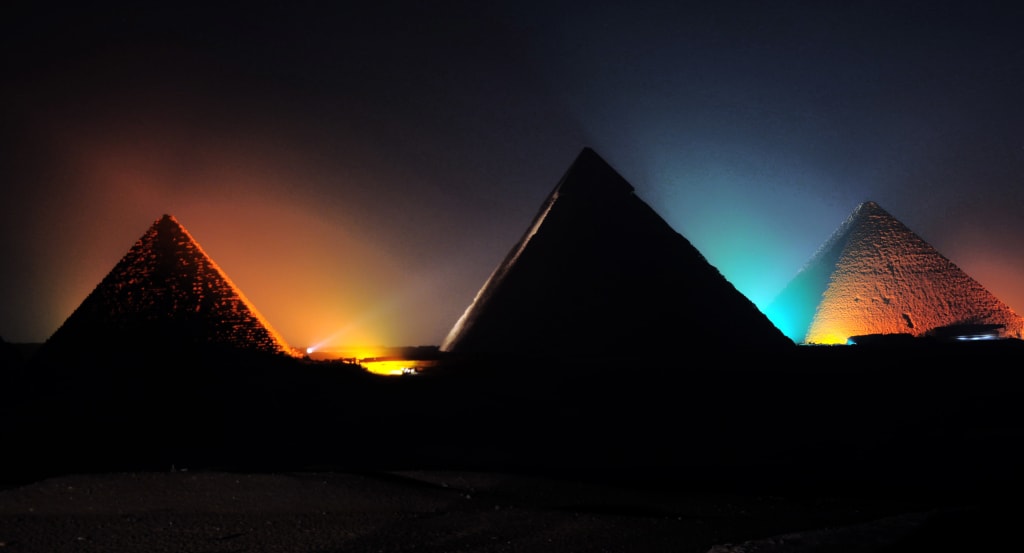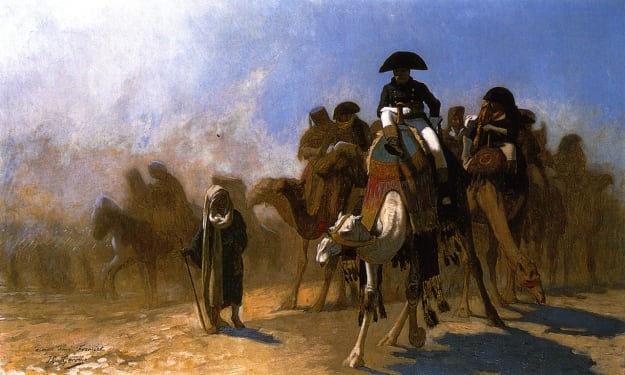From Chaos to Civilization
The Creation Myths of Ancient Egypt

Egyptian mythology has many fascinating features. One of the most interesting of these features, and sometimes frustrating, which one really doesn’t find anywhere else, is that there is more than one creation story. This makes it difficult if one is trying to streamline a singularly coherent narrative of their stories.
There are some commonalities in these stories, however. For example, during Zep Tepi, the First Time, the first thing was chaos and nothing. Out of that chaos came a thing, a solid thing upon which the foundation of creation could be made (this was a primordial perhaps pyramidal mound, or Benben Stone), and then the sun. On top of that, though not necessarily within the main myths; Out of this chaos and no-thing also came the Benu Bird which was the precursor to what we would call a phoenix. The God Khepri, associated with the scarab beetle, was also believed to have created himself.
There were four main accounts of Creation connected to particular cult/cultural/metropolitan centres: Hermopolis, Heliopolis, Memphis, and Thebes.
Hermopolian
Hermopolis was the Greek name for the Egyptian city named Khemenu. Hermes, the Greek God that they renamed the city after, was associated with the Egyptian God Thoth. Khemenu means “Eight-Town” after the Ogdoad; The Ogdoad (which means The Eight) were the primordial Gods birthed out of the deep, chaotic waters of Zep Tepi.
These deities paired off; with the males being associated with frogs and the females with snakes (the female names end in “-et”). There was Nu/Nun and Naunet who epitomized the primeval waters from which all was created. Huh and Hauhet were the water’s immeasurable scope. The personification of the darkness was Kek and Kauket. And, finally, there was Amun and Amaunet who were the veiled and mysterious behind everything. One of them, Amun, who was the God of Air, Invisibility, and the Hidden Powers (in contrast to the tangible world) later became a stand out God within the larger Egyptian pantheon. He was combined with Ra and associated with the sun.
Heliopolian
The Egyptian city of Awanu (“The Pillars”) was called the City of the Sun, or Heliopolis, was also known as the House of Ra. In this creation cycle; Atum creates himself. He was supposed to have existed before even Nu, the chaotic waters of creation, as potential. He was the fount of all elements and powers of the Universe. He emerged on the Primordial Mound. He “expectorated” out a son and daughter; Shu and Tefnut respectively. Shu was the air and Tefnut was moisture.
Shu and Tefnut had two children. These were Geb and Nut. Geb was the earth god and Nut was the sky who also defined the parameters of the world. In turn, these two also had offspring. These would become, with their for-bearers, the Ennead, the Nine, who would go on to define much of Egypt’s mythology and culture. The rest of the Ennead are: Osiris, the God of Regeneration, Fertility, and Order; Isis, Goddess of Magic, Culture, and Motherhood; Set, God of Chaos, Disorder, and the Encroaching Desert; and Nephthys, a complicated Goddess associated with Set and Isis in power as well as being a protector to the Dead. There was also Horus the Elder who was not born but was in spirit and later came into Horus, the son of Isis and Osiris.
Memphite
Memphis was the legendary first capital of what we consider Egypt. It is believed that the “First” Pharaoh, the person credited with being the first to unite Upper and Lower Egypt, Narmer/Menes founded it. It was called White Walls. It was also known as Hiku-Ptah which the Greeks later Hellenized into Aegyptos; which is where we get our Anglicized name of Egypt. The Egyptians had called their country Kemet (KMT) which means “The Black Land.”
Another self-created God was Ptah, the God of Craftsmen. He had the ability to envision the finished product, and shape raw materials to create that product. He created by the “Word.” The Ancient Egyptians believed that the heart is where thought came from and that’s where things in Ptah were developed and they were formed with his tongue, or “the Word.” Ptah was able to produce all things and Gods, therefore, through sound and speaking his intent.
It is believed that this cycle was connected with that of Heliopolis and that Ptah created Atum and the rest of the Ennead as it followed.
Sekhmet and her son with Ptah, Nefertem, were included in the Memphite Trinity. Nefertem was connected with the blue water lily and known for his beauty.
Theban
Originally called Waset, Thebes was a major centre for Egyptian civilization. In the creation story of the city, Amun was the central figure. He was the hidden, mysterious power behind all. He was all powerful and self-created. To them, all other Gods were just aspects of the greater Amun. Like the call of a great bird he shattered the stillness of the primordial world and thus all, including the Ogdoad and Ennead, was formed.
Instead of Amaunet, Amun’s consort was the Goddess Mut, whose name means “Mother.” They had a son, Khonsu, who became the God of the Moon.
Summing Up
As we can see, there are several similarities as well as differences between the various creation stories in ancient Egypt. There is a commonality in the initial thing being no-thing, a chaos from which now more specificity can then derive. This is very common in most mythologies as well as our understanding of the scientific model of the Universe. Perhaps authors like R.A. Schwaller de Lubicz and John Anthony West are correct in that these myths are communicating the symbols of a high civilization. If we follow that line, then Egypt, along with other cultures to the East, give us a blueprint on how to be able to get back to the Source of all things within ourselves.






Comments
There are no comments for this story
Be the first to respond and start the conversation.